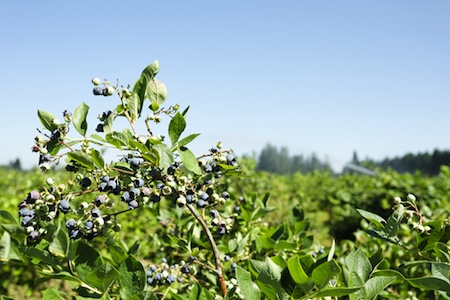“Ten years ago to think of growing blueberries in Peru was crazy”
Peru is the undisputed world leader in the blueberry export industry and is also the exporting country with the fastest growing production and shipments of fresh blueberries to the international market. Only in recent years has it gone from exporting 12.951 tons of fresh blueberries in the 2015/2016 season, to 162.456 tons in the 2020/21 season. Currently, as reported by Daniel Bustamante, president of the Association of Blueberry Producers of Peru (Proarándanos), for the 2021/2022 campaign it is projected to export 211.200 tons of fresh blueberries, which represents an extraordinary increase in the global industry.
We spoke with Daniel Bustamante about this extraordinary reality and its future prospects, in an extensive interview that we will publish in the March issue of Blue Magazine, from which we advance some passages.
The president of the body that leads the Peruvian blueberry industry has a long look to explain the phenomenology of Peruvian success and attributes it without triumphalist spirit to multiple factors that have been combined and that explain this great growth of the industry in such a short time .
“Ten years ago, thinking about growing blueberries in Peru was crazy, but the conditions under which blueberries are grown in Peru are different. At 12 or 14 months you start to see the product, to see results, and it is a wonder to have achieved it in Peru. You were reaching a depleted market, before Chile entered, we practically entered South America almost alone, then with very good export prices, quickly recovering investments. Thus, very large developments began to be made in the blueberry agricultural industry, and not only because of the facilities of land and water, but also because of the Agrarian Law of 2001, which promoted agriculture, a great law wherever you see it. that understood agriculture as something seasonal, producing work for the labor force, providing working conditions and formalizing the sector, which was also achieved with tax incentives for capital to enter the agricultural sector. All this then triggers the development of the entire sector and the growth of the agricultural industry ”, he says.
New genetics for varietal replacement
This need, says Bustamante, has led to a high penetration of genetic programs in Peru, with varieties that are more desired by the markets, and as in Peru, productive results are seen in 10 or 12 months, varietal change is much more viable, because they leave testing very quickly the varieties of all kinds of the genetic industry, with results that allow to discard very quickly since there is such a short time to develop trial and error. “We can correct very quickly,” he says.
“Today the industry continues to grow and it is already seeing how the genetic change is changing the profile of the exported product a little, we have already passed from an absolute preponderance of Biloxi and the varieties of royalty, of genetic programs with intellectual property, are beginning to enter. that are more attractive for certain markets ”, he says and adds:
“The new genetics is essential to be able to serve these markets, which have already been conquered thanks to the fact that we are entering a time of counter-season, of shortages. We are currently testing many varieties of new genetic houses, I think we reached 56 different varieties ”.
According to Proarándanos, it is currently the Ventura variety that covers 32% of the 16,500 hectares planted with blueberries that exist in Peru and Biloxi reaches 30%. The remaining 38% is distributed among the 56 varieties of the houses that offer protected genetic material, such as those that come from the Peruvian Inka`s Berries, the Australian ones from MBO, or those from Driscoll’s, Fall Creek, Hortifrut and OZblu, among others. . Just a couple of years ago, the Biloxi variety covered about 60% of the planted area in Peru.
03/01/2022







